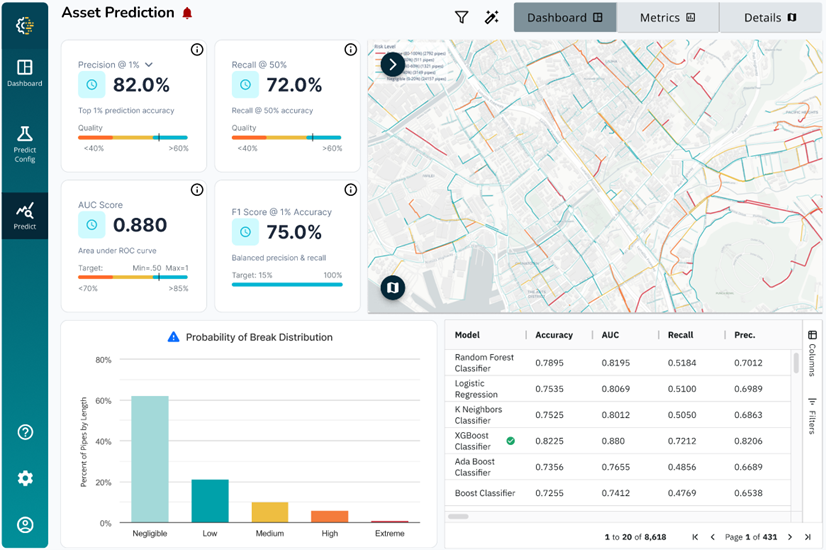The infrastructure that delivers clean water and effective sanitation is the silent backbone of our communities. Yet, the managers responsible for these vital systems face perennial challenges: aging networks, fragmented data scattered across departments, and the constant pressure of limited budgets. This often forces utilities into a costly, disruptive "break-fix" cycle—a reactive and often unpredictable approach that consumes resources and increases system-wide risk.
In this environment, merely presenting a spreadsheet of urgently needed rehabilitation and replacement is no longer enough to secure necessary funding from City Councils or governing boards. Leaders need to translate technical necessity into a clear, quantifiable business justification.
This is the imperative that drove the development of assetCAST TM : the strategic planning engine designed to move utilities from costly reaction to intelligent, data-driven asset management.
The Mandate: Optimization and Defensibility
For utility leaders, the primary goal of modern asset management is to maintain the desired level of service in the most cost-effective way over the asset's lifecycle. assetCAST provides the strategic command center required to achieve this goal.
To deliver this, we focus on two key areas:
1. Financial and Risk Optimization
Asset management inherently involves balancing costs, risks, opportunities, and performance benefits. Instead of simply compiling a prioritized list of high-risk assets, assetCAST uses sophisticated analysis to determine the most financially efficient, multi-year capital program possible.
This answers the crucial, executive-level question: Given our fixed capital budget over the next several years, what precise sequence of projects delivers the maximum achievable reduction in system-wide risk?
By incorporating advanced predictive modeling, we help organizations estimate failure potential. When paired with a comprehensive understanding of consequence (including economic, social, and environmental factors), the platform quantifies overall risk. This capability transforms scattered operational data into unified insights that support reliable resource allocation.

2. A Data-Driven, Defensible Capital Plan
For too long, budget approval depended on anecdotal evidence or scattered historical records of varying quality. assetCAST embeds a transparent, logical process into your workflow, automatically translating asset condition and system risk into a defensible Capital Improvement Plan (CIP).
By applying a best-in-class approach that is rooted in industry best practices, while also tech-enabled with proprietary machine-learning based algorithms, the resulting CIP is easily justifiable and aligned with organizational objectives. Additionally, while some existing methods may rely on an asset-by-asset approach, our solution matches real-world planning scenarios in which rehabilitation and replacement plans are bundled into construction-ready “packages” or projects. This often provides a sound basis needed to secure critical infrastructure funding.
Leveraging Analytical Power
Moving to advanced asset management requires synthesizing vast amounts of information—from physical inventory (pipes, valves, hydrants, pumps) to environmental factors (soil corrosivity, groundwater, traffic loading). assetCAST serves as a unifying technology hub, simplifying this complexity.
Strategic asset planning isn’t just a technical upgrade—it’s a leadership imperative. With assetCAST™, utilities gain more than a tool; they gain a pathway to smarter investment, reduced risk, and stronger justification for every dollar spent. In a world where infrastructure demands are growing and budgets remain tight, the ability to move from reactive fixes to proactive, defensible planning is no longer optional—it’s transformative.
The result? The capability to move "From Data to Defensible Plan in Days, Not Months".
.png)

